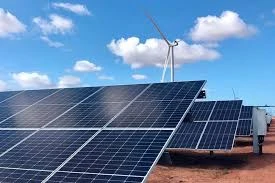solar panel efficiency by latitude
Solar Panel Efficiency by Latitude Understanding the Impact of Location
Solar energy is a crucial component of the global shift towards renewable energy sources. As nations strive to cut down on greenhouse gas emissions and move away from fossil fuels, solar panels have emerged as a popular solution for harnessing clean energy. However, the efficiency of solar panels can vary significantly depending on geographic location, particularly latitude. In this article, we will explore how latitude affects solar panel efficiency and what this means for regions around the world.
Solar Panel Efficiency by Latitude Understanding the Impact of Location
In tropical regions situated near the equator, such as parts of Africa, Southeast Asia, and South America, solar panel efficiency tends to be higher. These areas receive more direct sunlight throughout the year, resulting in consistent energy production. Global solar irradiance in these regions can often exceed 5 kWh/m² per day, making solar energy systems particularly effective. For instance, countries like Brazil and India, which are near the equator, have reported high solar energy yields, showcasing the advantages of favorable geographic positioning.
solar panel efficiency by latitude

Conversely, as one moves toward higher latitudes, such as Northern Europe or Canada, solar panel efficiency begins to decline. Regions beyond approximately 40° latitude experience significant seasonal changes, impacting the amount of sunlight received. During winter months, these areas can experience long periods of reduced daylight or even complete darkness. This seasonal variability poses challenges for solar energy generation, as the production can drop significantly during these times. For example, in countries like Sweden and Norway, solar output can be drastically low during the winter months, even though summer months may yield surprisingly good results due to longer daylight hours.
To mitigate the impacts of latitude on solar panel efficiency, some regions have begun to adopt advanced technologies. Innovative solar tracking systems, for example, enable solar panels to follow the sun’s trajectory throughout the day. This technique can enhance energy collection, even in areas that might otherwise experience lower output due to their latitude. Additionally, hybrid systems that combine solar power with other renewable sources, like wind or hydroelectric, can help maintain a steady energy supply throughout the year.
Another approach is the selection of solar panels optimized for lower light conditions. Bifacial solar panels, which can capture sunlight from both sides, and high-efficiency panels designed for low-light scenarios can improve performance in higher latitudes.
In conclusion, while latitude plays a critical role in determining solar panel efficiency, advancements in technology and strategic planning can help maximize solar energy production in many regions. By understanding how geographic location affects solar performance, policymakers and solar energy providers can make informed decisions that lead to greater sustainability and energy independence. Ultimately, harnessing solar energy effectively, regardless of latitude, is essential for a greener future.
-
Understanding the Advantages of Solar String Inverters for Your Energy SystemNewsApr.29,2025
-
Choosing the Right PV Inverter: A Comprehensive GuideNewsApr.29,2025
-
The Future of Solar Power: Exploring Bifacial Solar PanelsNewsApr.29,2025
-
The Complete Guide to Solar Panels: Efficiency, Cost, And InstallationNewsApr.29,2025
-
The Best Options for Efficiency and Cost-EffectivenessNewsApr.29,2025
-
Harnessing the Power of Off-Grid Solar Inverters for Energy IndependenceNewsApr.29,2025







